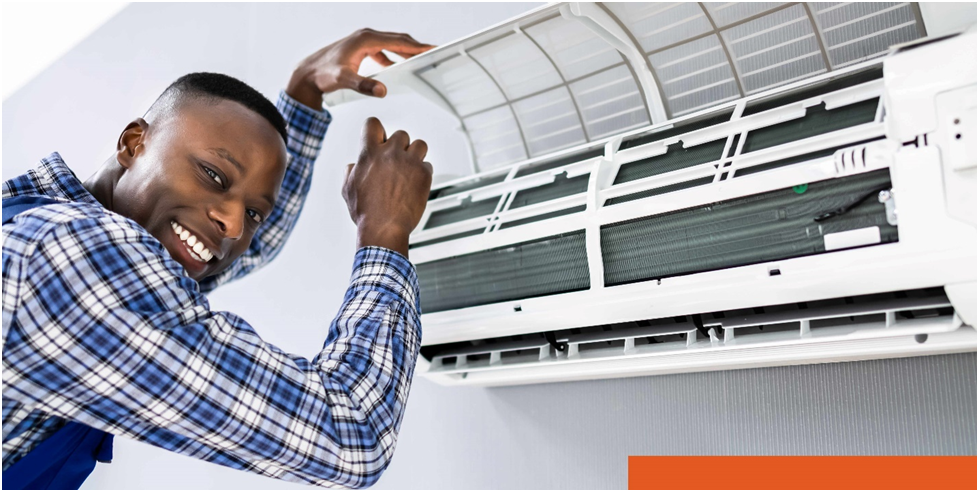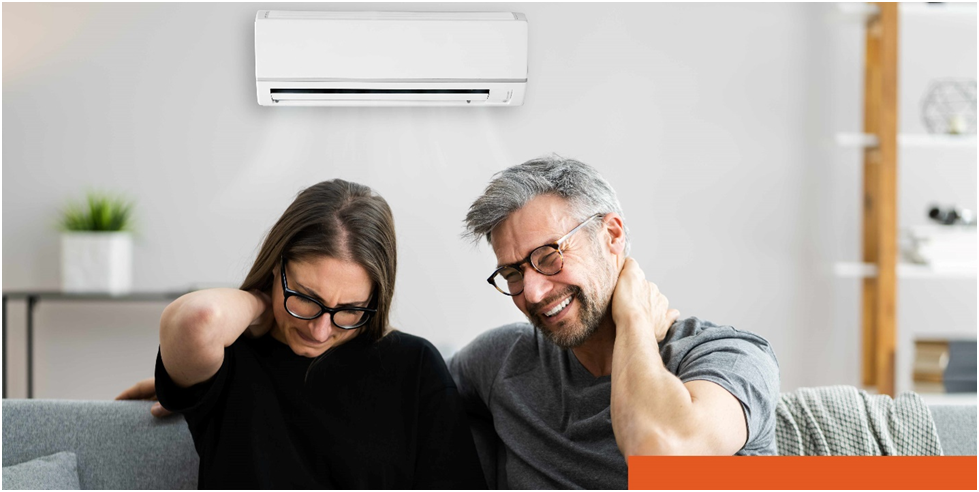
How To Fix An AC That Is Not Cooling Your Home?
Let’s assume it’s a blisteringly hot day in Sacramento, and you get home after an exhausting day at work, eagerly anticipating your home’s relaxing and incredible comforts. But instead, you’re hit with the revelation that your AC system isn’t cooling. What a total nightmare!
Before you panic and immediately call a professional for air conditioning repair in Sacramento, consider that the issue might be something you can fix alone. In this blog, we’ll explore the significance of a properly functioning AC system, common reasons for AC not cooling, basic troubleshooting steps you can take to get your home feeling chilly and comfortable again, and so forth!
Importance of a Properly Functioning AC System
Since air conditioners maintain a comfy indoor environment, notably during sweltering summers, a well-functioning AC system not only cools your home but also enhances indoor air quality and reduces humidity. AC that doesn’t cool as it should cause a slew of issues, comprising:
Discomfort:
A non-cooling AC system can make your home unbearably hot, causing discomfort for you and your family.
Increased Energy Consumption:
When your AC struggles to cool your home, it tends to work harder, resulting in higher energy bills
Poor Indoor Air Quality:
If your AC isn’t functioning flawlessly, it may not appropriately filter the air or regulate humidity levels, resulting in poor indoor air quality and potential health issues.
Damage to your AC system:
Ignoring the problem and consistently running a malfunctioning AC system can lead to further damage, ultimately requiring more costly repairs or even replacement.
Consider promptly addressing your AC’s issues, commencing with basic troubleshooting to avert potential consequences. Becoming proactive can help you maintain a comfortable home ambiance for yourself and your loved ones.

Common Reasons for AC Not Cooling
There are several reasons why your AC system may not be cooling your home as it should. Some are encompassing below:
- Incorrect thermostat settings
- Dirty or clogged air filters
- Blocked or restricted airflow around the unit
- Low refrigerant levels
- Malfunctioning components, such as the compressor or fan motor
Now that you’re aware of the common reasons for AC not cooling. Let’s unveil some basic troubleshooting steps you can take to resolve the issue.
Basic Troubleshooting Steps
Before calling a professional, try these straightforward steps, saving time and money by redressing the issue yourself.
Check Your Thermostat Settings
First and foremost, ensure your thermostat settings is preset to “COOL” mode and the desired temp is lower than the current room temperature. Afterward, verify the fan is set to “AUTO” instead of “ON.” The fan setting to ON signifies it will continuously blow air, even if the AC isn’t actively cooling. Also, check the batteries regularly and replace them if required for a battery-powered thermostat. A weak battery might cause the thermostat to malfunction, leading to cooling issues.
Inspect the Air Filters
Clogged or dirty air filters can significantly impact your AC system’s performance, as they restrict airflow, making it difficult for your AC to cool your home effectively. Additionally, dirty filters can cause the evaporator coil to freeze, further exacerbating the issue. Hence, examine your air filters and replace them if they are filthy or clogged. Consider changing your air filters every 1-3 months, depending on usage and environmental factors.
Ensure Proper Air Flow Around the Unit
Ensure there’s proper airflow around your indoor and outdoor AC units. For the indoor unit, check that no furniture or other items are blocking the air vents or return grilles, as blocked ducts can significantly restrict airflow and decrease your AC system’s cooling capacity.
Subsequently, for the outdoor unit, inspect the area for any debris, such as leaves, branches, or trash, that may obstruct airflow. If you find any obstructions, carefully remove them to ensure the outdoor unit is getting proper airflow.

More Advanced Troubleshooting Steps
If you’ve tried the basic troubleshooting steps and still have issues with your AC system not cooling, try more advanced troubleshooting. But, more significantly, it’s crucial to acknowledge if you’re not confident or comfortable in handling these steps, and it’s a prudent and safe choice to seek assistance from an expert.
Examine the Condenser Coils
Importance of Clean Condenser Coils
The condenser coils release the heat absorbed by the refrigerant from your home. Dirty or clogged condenser coils can reduce your AC system’s efficiency and cooling capacity. When the coils are dirty, the AC system needs to work harder to remove heat, resulting in higher energy bills and potential damage to the system.
How to Clean Condenser Coils
How to Clean Condenser Coils
- Turn off the power to your AC unit..
- Remove the protective grille or panel to access the coils.
- Use a soft brush, like a refrigerator coil brush, to gently remove dirt and debris.
- Be cautious not to damage the delicate fins on the coils.
- After cleaning the coils, replace the protective grille and restore power to the unit
Inspect the Refrigerant Levels
Signs of Low Refrigerant
Low refrigerant levels can cause your AC system to struggle to cool your home effectively. Telltale signs of low refrigerant include:
- Warm air blowing from your vents
- Long cooling cycles
- A hissing or bubbling noise from the AC unit
- Ice forming on the refrigerant lines
How to Add Refrigerant
Adding refrigerant to your AC system is not a DIY task. Thus, it’s essential to call a professional HVAC technician to check and refill refrigerant levels, as handling refrigerant requires specific tools and expertise.
Dealing with Refrigerant Leaks
If you suspect a refrigerant leak, it’s crucial to address it promptly, as overlooking them can disrupt your AC performance and may pose a potential health risk. So, to pinpoint and fix the leak in your HVAC system safely and efficiently, it’s best to confer with a skilled technician.
Check the Compressor
1Signs of Compressor Issues
The compressor is a critical component of your AC system, responsible for pressurizing and circulating the refrigerant. Signs of compressor issues consist of:
- Loud noises coming from the outdoor unit
- AC system shutting off frequently or not turning on at all
- Reduced cooling capacity
How to Fix a Compressor Problem
Diagnosing and repairing compressor issues isn’t as straightforward as you think. It necessitates professional assistance to inspect and repair the compressor with specialized skills and tools.
Also Read: HOW TO REPAIR HVAC AIR CONDITIONER
Additional Tips for Optimal AC Performance
To significantly boost your AC system’s performance and maintain a comfortable home, severe key steps are available that you can leverage beyond troubleshooting.
Routine Maintenance for Your AC System
Schedule Regular Tune-ups
Regular tune-ups for your AC system can help maintain its efficiency and prolong its life. An HVAC professional can inspect, clean, and repair any issues during a tune-up, ensuring your system runs optimally.
DIY Maintenance Tasks
You can keep your AC system in pristine shape with some DIY maintenance tasks, including:
- Regularly changing air filters
- Cleaning the outdoor unit
- Checking for and sealing any duct leaks
Upgrading to a Smart Thermostat
Replacing your thermostat with a smart one can enhance your AC’s performance for your utmost comfort, enabling you to adjust temperature settings automatically according to your habits and preferences. In addition, it can result in improved comfort and substantial energy savings.
Installing an Energy-efficient AC Unit
Upgrading a new, energy-efficient AC system can significantly reduce energy consumption and monthly bills. Say goodbye to obsolescence and inefficiency for good!
Proper Insulation and Sealing
Ensuring your home is well-insulated and sealed can help prevent cool air from escaping and reduce the workload on your AC system. Check for any air leaks or gaps in insulation, and seal them to improve your home’s overall energy efficiency.
Seeking Professional Help
While basic troubleshooting and maintenance can resolve many AC issues, there are times when professional help is necessary. Thus, grasping when to call a professional and how to find a reliable one can save you time, money, and hassle. But, conversely, don’t let the wrong choice get your AC down.
When to call an HVAC Technician
Following are a few instances mandating professional assistance:
- You’ve tried basic troubleshooting steps, and the AC system still isn’t cooling your home effectively.
- You suspect refrigerant leaks, low refrigerant levels, or compressor issues that can only be fixable with specialized tools and expertise.
- The AC system sounds strange or emits strange odors, indicating potential electrical or mechanical problems.
- Your energy bills have increased significantly without any changes in usage, suggesting an underlying issue with your AC system’s efficiency.
- You’re due for a regular AC maintenance check, recommended at least once a year.
Finding a Reliable Technician
Whether you seek air conditioning or heater repair in Sacramento, locating a reliable and competent HVAC technician is imperative to ensure your appliance receives the best possible care. Envisage the following factors to facilitate your search!
- Divulge with friends, family, or acquaintances who once used their services and have shared positive experiences. Seeking assistance from knowns can steer you in the right direction and save you time and effort in your search.
- Check online reviews and ratings to get an idea of the technician’s reputation and quality of service.
- Verify that the technician holds the necessary licenses and certifications, such as the NATE (North American Technician Excellence) certification, which ensures higher expertise.
- Ensure the technician is insured to protect yourself in case of any accidents or damage during the repair process.
Things to Consider Before Hiring a Professional
Heed the following variables before delegating your task to one:
- Obtain multiple quotes from different HVAC companies to compare prices and services.
- Ask for a detailed, written estimate outlining the scope of work, materials, and labor costs to avoid being off guard.
- Inquire about any guarantees or warranties offered by the technician, which can provide peace of mind in case any issues arise after the repair.
- Verify the technician’s experience and expertise, particularly with your specific AC system make and model.
Conclusion
Importance of AC Maintenance
Ensuring the AC system’s optimal performance, prolonging its lifespan, and minimizing costly repairs or replacements all depend on regular, proper maintenance. So don’t neglect this crucial investment! Adding regular maintenance checks by professional and DIY tasks like cleaning air filters and outdoor units to your to-do list can help elude prevalent issues, keeping your AC system in excellent condition.
Comfort and Energy-efficiency of Your Home
Ensuring your home is both comfortable and energy-efficient comes down to the well-being of your AC system – an essential aspect to keep running smoothly for ultimate comfort and cost savings. By staying vigilant with maintenance, troubleshooting, and seeking professional help from Fix-It Rite when necessary, you can maintain a cool and comfy living environment while reducing your energy consumption and energy bills. When your air conditioning system is in good condition, it does more than merely keep your home comfy, fostering healthy and sustainable living and helping you and your loved ones thrive!

